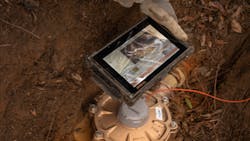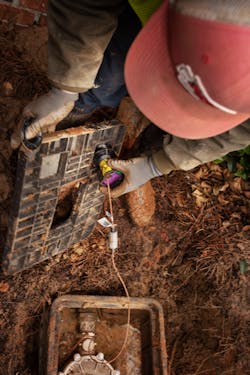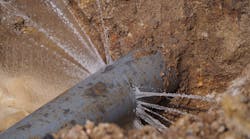The AWWA’s 2022 ACE conference hosted a panel discussion on its Level of Progress in Utility Asset Management Survey. The panel shared that, despite its importance, only 5% of public utilities have a formal asset management plan in place.
This finding came to light despite AWWA recommendation that “utilities should adopt a proactive, sustainable, solution-oriented approach to manage assets in support of the economic, social and environmental needs of the area served.”
Most Utilities Still Haven’t Implemented Asset Management
There are several reasons behind that 5% figure. Often, there is no legislated asset management mandate in a jurisdiction. That can divert the leadership to other priorities.
Internally, there may not be a designated champion in place to drive asset management. Organizations rarely focus on anything new until someone in authority advocates for it and removes obstacles to making it happen.
Resources can also be a constraint. Governments continue to call on public utilities to do more with less. This applies to funding as well as human resources.
There are ongoing labor disruptions throughout the economy. Many utility employees have struggled to keep systems running while working remotely. Baby boomers are retiring, often taking decades of knowledge with them.
Technology has changed rapidly, and many public utilities haven’t kept pace. Water utilities may have multiple generations of legacy applications in place, but these systems may not be well-integrated. Expertise to make the most of IT resources is finite.
These limitations are understandable. Even so, many states and local water authorities offer grant mechanisms to help local utilities overcome these obstacles. The AWWA is actively campaigning for more of these programs.
The reason for the grants is that ineffective asset management is causing unforeseen failures. Without timely access to accurate metering data, utility managers often fail to plan. Too often this leads to reactive crisis management on avoidable issues.
Sacramento Suburban Water District (SSWD) Updates Its Meter Management Plan
The Sacramento Suburban Water District (SSWD) is one of the most forward-thinking utilities I have ever encountered. They are a leader in asset management and are in the top 5% of utilities with an overarching asset management plan for its infrastructure. The overall program’s benefits led management to focus on documenting its water meter management plan.
As with many public utilities, several key SSWD staff members are planning to retire in the coming years. Senior management wants to mitigate the risk of irreplaceable institutional knowledge leaving.
So, the utility is executing an aggressive program to document support requirements for industrial, commercial and residential meters. The project is an opportunity to analyze current work processes, and document those workflows to refine policies, procedures and guidelines.
The improved documentation will contribute to knowledge management within the team and facilitate new staff orientation. In the longer term, meter asset management will deliver timely access to accurate information on water operations.
Making better use of metering data allows the utility to assess maintenance costs for meters. This will lead to formalized processes to ensure improved maintenance, repair and replacement planning. For example, keeping better maintenance records will help the utility make full use of warranty coverage.
This improved plan to memorialize decisions made to manage the assets will also lead to better repair versus replace decisions. It also enables efficiencies by choosing outsourced versus in-house resources for field activities.
The SSWD’s existing, overall asset management approach gave their team a unique perspective on the benefits of documenting meter management.
Even though many water utilities approach asset management differently, those who are building a program from scratch may find that starting with a focus on meters and expanding to other infrastructure in phases is an excellent launching point.
Where to Start
Most utilities don’t have an asset management plan in place, and may feel daunted by the thought of developing one. Starting with a metering-based project can deliver a quick win.
Trying to plan on an organization-wide scale when the team is just getting started can lead to paralysis of analysis. Senior management is looking for tangible results, without which they may become skeptical. So, starting somewhere is better than not starting at all. Meters are often the best place to begin, even for a utility like the SSWD who has an expansive plan in place, but needs to start documenting it.
The AWWA recommends utilities ask these questions when they start planning any asset management initiative:
- What is the current state of my assets?
- What is my required level of service?
- What are my business risks?
- What are my best operations and maintenance (O&M) and capital improvement plan (CIP) options?
- What is my best long-term funding strategy?
Asset Management Planning – The First Three Phrases
When a utility is ready to get started with asset management planning, there are three key phases to start
Understand the Utility’s Past, Present and Future
Teams need to understand how the infrastructure evolved. How and when were the assets acquired and installed? Teams need to identify assets along with their location and condition. Also, consider how the community plans to change and what assets will be required to support those changes in the future.
Determine Inventory to Include in Asset Management
Not all assets are mission critical, and some may better lend themselves to being managed. This is the stage where utilities can pilot areas, often starting with water meters.
They can also outline later phases and priorities for inventory segments to be added to the overall asset management plan. For example, they might begin with industrial meters, then work toward commercial and finally residential customers.
Utilities should also identify the data to include in the inventory. What needs to be tracked as each type of asset matures? What scheduled maintenance will be required and when should this be scheduled? Remember that workload can be more important than years in operation when estimating a component’s service life.
Determine Tools Required
Public utilities vary widely in size and complexity, so a utility has to choose the most effective asset management method for their organization.
In most cases, a dedicated Computerized Maintenance Management System (CMMS) is required for effective asset management. Supporting this calls for functionality such as real-world modelling of networks in two or three dimensions. This enables staff to analyze the as-built infrastructure of the water utility system.
Analytical and visualization tools help staff to assess the infrastructure’s environment and potential threats. Risk assessment becomes easier, and crews can avoid failures proactively.
Field workers often benefit from mobile access to such applications. This makes asset inspections more thorough and efficient as well as improves collaboration between field and office staff.
Better Measurement Means Better Management
Developing an asset management plan delivers benefits to all stakeholders. Maintenance schedules are simplified and more effective, improving water quality and customer service. Staff can take proactive measures to prevent unplanned, emergency repairs and replacements. This ultimately reduces any potential interruptions in services for customers.
Knowing the age, location and condition of utility assets, like meters, is essential for accurate planning and budgeting. An asset management plan enables analysis and forecasting. Utility planners and financial analysts can predict repair and replacement needs with greater accuracy and plan accordingly.
Effective meter management is also important for water conservation. Systems allow staff to detect and prevent major leaks within the system, which reduces waste in the growing number of communities with scarce water resources.
Asset management systems can improve customer communications. The instant data that systems deliver helps customers and local leaders understand rate changes. Communications staff can also use this data to raise customer awareness of service benefits, raising a utility’s profile in the community.
Asset management plans deliver timely access to the accurate measurements that improve infrastructure management. This supports more effective decision making to guide service delivery to the communities that public utilities exist to serve. As with most projects, better measurement means better management.





